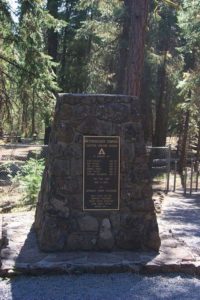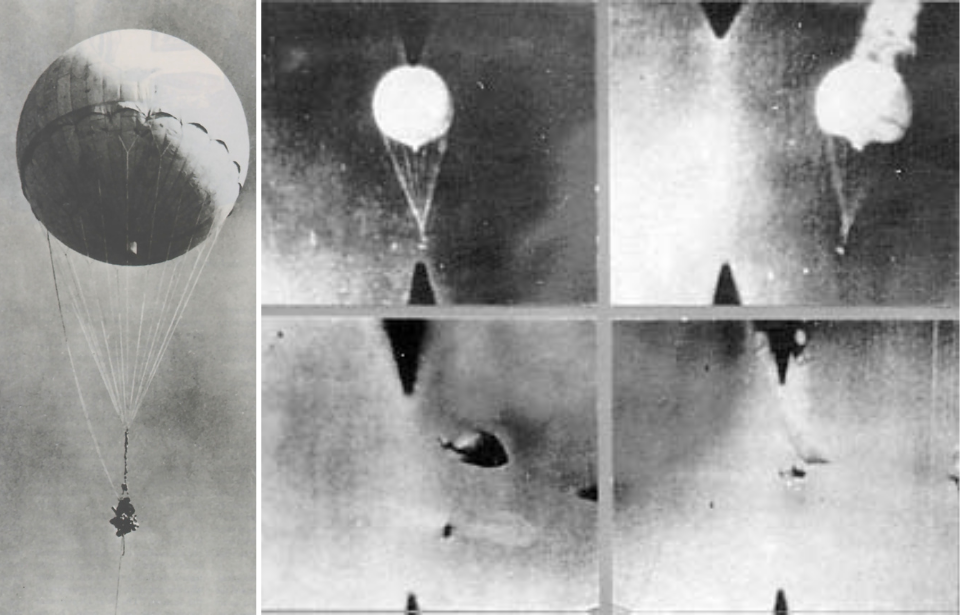Compared to much of the world, which saw entire cities and swaths of land leveled from war, the mainland United States managed to come out of WWII relatively unscathed. Not entirely unscathed, however, as it was actually the victim of Japanese balloon bombs, the earliest known intercontinental weapons.
Balloon bombs were designed to create chaos
These weapons were designed and launched by Japan, able to cross the Pacific ocean and rain down fire and terror on the US population…at least in theory. They weren’t a revolutionary type of advanced technology, but were in fact humble balloons that made use of the jet stream over the Pacific Ocean to carry potentially deadly ordnance. “Potentially” is important here, as the balloons were completely unguided, relying on the winds and good luck to reach their target.
These Japanese balloon bombs were the first intercontinental weapons deployed until the arrival of the B-36 Peacemaker bomber in the late 1940s, and they held the record for the longest ranged attacks in the history of warfare until the Operation Black Buck missions on the Falklands Islands in 1982.
The Japanese started launching these balloons in late 1944, hoping the jet stream would carry them to the U.S., where they would drop their payload and damage property, kill people, and start forest fires.
The concept was created after the Japanese discovered the existence of the jet stream at around 30,000 feet above the Pacific Ocean.
Despite their rather simplistic nature, the Japanese balloon bombs actually required some complex engineering to make work. As they were filled with hydrogen, they would rise when warmed by the sun in the day, and fall when cooled at night. Engineers created a mechanized system that would release sandbag weights below a certain altitude to maintain its height, and also vent hydrogen above certain altitudes to stop it from ascending too high.
The sandbags were released with a small explosive charge. Once the balloon was over the U.S., it would release its 450-kilogram payload with another explosive charge. After this, yet another charge would destroy the balloon itself, leaving no evidence of its presence.
The balloons were originally made from silk, but they would eventually be constructed from a type of paper.
The balloon bombs were named the Fu-Go, and were first used in November 1944. A U.S. Navy patrol aircraft discovered one of the first of these near Los Angeles. More began to arrive in many U.S. states, prompting the government to investigate the reports and sightings, which were coming from both military personnel and civilians alike.
While the threat from the balloons was low, officials understood the risks of large forest fires and public morale. Fighter aircraft were used to shoot them down, which was often difficult due to their high altitude and speed.
A balloon landed near the Hanford Site, which was busy producing fissile nuclear fuel for the Manhattan Project, short-circuiting powerlines, and cutting power to the site. Luckily, the site’s nuclear reactors’ backup generators covered the loss of power.
The sandbags revealed the point of origin
Many theories were drawn up on the bombs’ origins, with some suggesting they were released from prisoner of war camps in the U.S., or that Japanese mini-subs were releasing them close to US shores. Few believed they would have been launched from as far away as Japan.
Sand recovered from the sandbag ballast was sent to the Military Geology Unit of the United States Geological Survey to be looked at further.
Chemical and microscopic analysis established its composition and linked it to Ichinomiya. Aerial reconnaissance then found hydrogen manufacturing facilities near there, which were subsequently bombed and destroyed by B-29 bombers in April 1945.
With the destruction of much of the project’s hydrogen supplies, and with the understanding that the attacks had been a failure, the Fu-Go program was canceled. Over 9,000 of these balloons were launched in total, with only 300 being found in the U.S.
The only victims of the balloon bombs
As mentioned, the balloons had the potential to cause serious damage, but almost never did so thanks to their terrible accuracy, and because many dropped their payload into the Pacific ocean due to an error in the estimated journey time to the U.S.

Despite this, the Fu-Go balloons caused the only deaths from enemy action on the continental U.S. after it joined the war. This tragic event happened on May 5th, 1945. Archie Mitchell, a pastor from the Bly Christian and Missionary Alliance Church, ventured up the Gearhart Mountain with his pregnant wife Elsie and five of their Sunday school students for a picnic. Archie dropped Elsie and the children off to find a suitable spot to eat while he parked the car.
More from us: Debunked: 5 Myths About Pearl Harbor Attack
While walking over to their location, the group exclaimed to Archie they had found what looked like a balloon. Having heard about the Japanese balloon bombs, Archie told them to stay away from it. At this moment, a series of two explosions occurred, killing the entire group, except Archie. The Mitchell Memorial was erected in their memory at the location of the explosion.
Once the authorities arrived, it was discovered that there was still snow under the balloon, indicating it had laid there for a few weeks before being discovered. It is believed someone in the group kicked or moved the device, causing it to explode.
